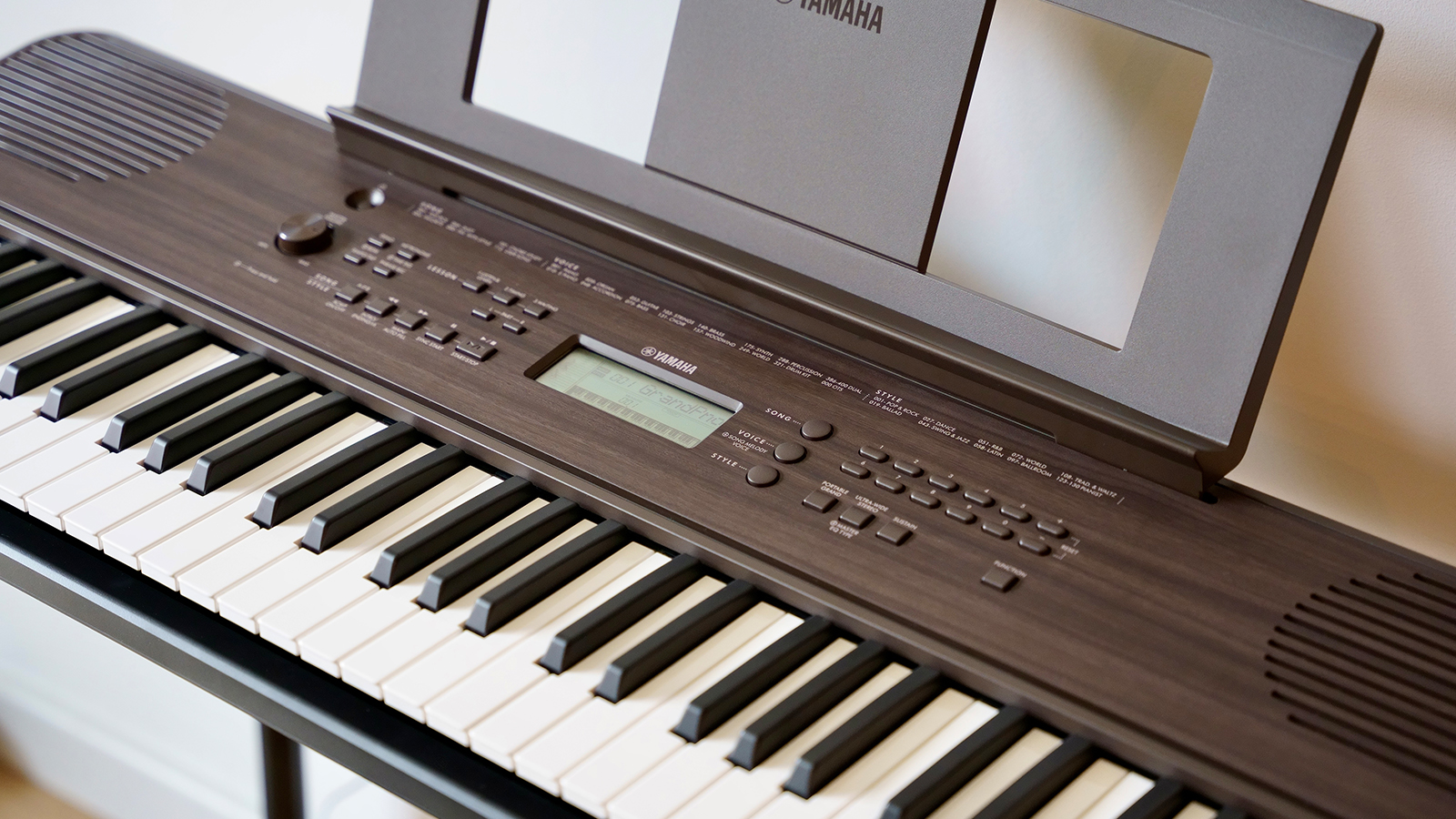MusicRadar Verdict
The PSR-E360 makes a great first keyboard with its clean design and portability, though it lacks some modern connectivity. Newer PSR-E models like the E383 and E473 provide more advanced features for a similar or better value.
Pros
- +
Lightweight and compact, easy to store
- +
Clean, understated design
- +
Quick access to the main piano sound via the ‘Portable Grand’ switch
Cons
- -
Other E-series models offer more features for a similar or better price
- -
Lacks some modern connectivity options (no USB or Bluetooth)
- -
Accompaniment tracks feel dated
MusicRadar's got your back
What is it?
The PSR series, originally known as PortaSound Regular, is Yamaha’s long-running line of portable arranger keyboards, and chances are you’ve encountered one before. The PSR-E models in particular are aimed at beginners, offering an accessible entry point into playing.
The PSR-E360, one of Yamaha’s more recent models designed with beginners in mind, retains the familiar layout of the series while introducing a refreshed design. This time, Yamaha has opted for a more understated aesthetic, featuring clean lines, rounded edges, and natural wood-inspired finishes that blend effortlessly into any home setting; it comes in two wood-effect finishes, Dark Walnut and Maple.
In terms of features available from the buttons on the front, the PSR-E360 offers quick access to the different sounds, accompaniment, metronome, lesson function as well as two useful switches: the ultra-wide stereo which enhance the sonic field resulting in a more immersive sound, and the ‘the portable grand’ switch that allows player to very easily go back to the main piano voice of the instrument.
The Yamaha PSR-E360 is fairly compact and lightweight, only 4kg, which means it can easily be carried around or put away after use. It can be plugged into the mains, but it also works with 6 AA batteries.
It’s a standard 61-key, full-size touch-sensitive keyboard, meaning the keys respond to how firmly they’re pressed, allowing for expressive control. The white keys feature a soft, glossy finish, while the black keys have a matte, slightly textured surface for improved grip and a more natural feel.
As opposed to digital pianos that often only come with a dozen sounds, arranger keyboards are known to support a wide variety of voices. The PSR-E360 features 354 voices or pianos, woodwind, strings, and synthesiser sounds as well as 16 drum kits and sFX.
You will also find a list of effects to use on your sound, nine reverbs, choruses and EQs, adding a sound design element to the experience.
Want all the hottest music and gear news, reviews, deals, features and more, direct to your inbox? Sign up here.
The PSR-E360 also includes 130 auto-accompaniment styles for play-along practice. To make learning these songs easier, Yamaha provides the Easy Song Book, a downloadable collection of sheet music and practice parts. The book breaks down each song into right-hand melodies, left-hand chords, and optional chord symbols, helping beginners follow along, practice timing, and get the most out of the keyboard’s lesson modes. 112 songs of Yamaha’s leaning platform are available on the PSR-E360.
The PSR-E360 features an onboard recorder and an AUX IN jack for connecting external audio devices.
Build & features
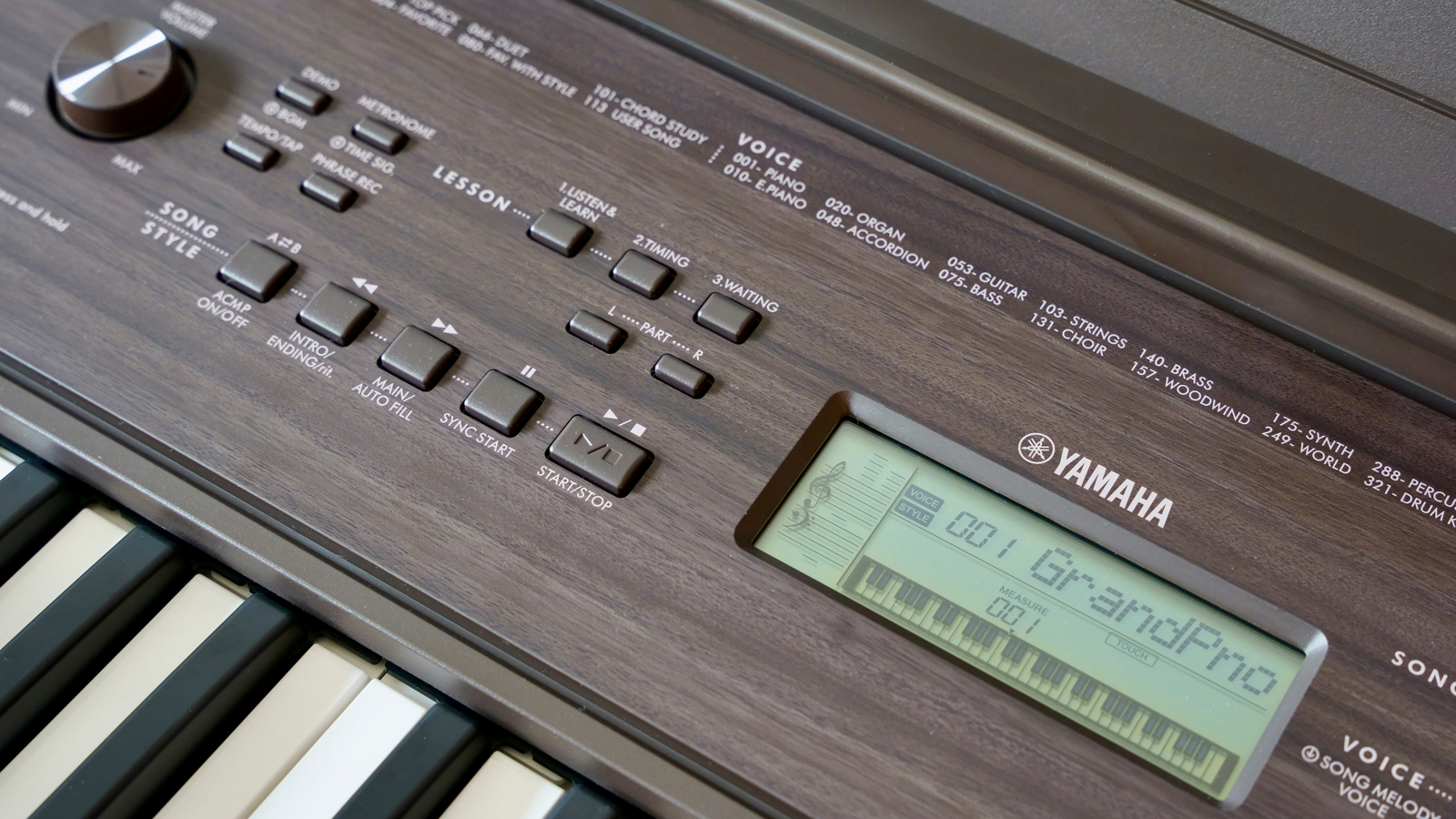
When it comes to light and compact beginner keyboards, the Yamaha PSR-E series is often a simple and affordable choice, and the PSR-E360 is no exception.
Unlike some entry-level instruments that rely on bright, flashy colours, the PSR-E360 keeps things subtle. The function buttons are small and unobtrusive, blending naturally into the panel, while the central screen sits quietly within the overall layout, contributing to the keyboard’s understated design.
Although the build leans more toward plastic than premium materials, the wood-print finish on the top adds a touch of elegance, giving the instrument a simple, refined look. We particularly appreciated the speaker design, which feels clean and harmonious, complementing the keyboard’s overall aesthetic.
From a 2025 perspective, the PSR-E360 lacks certain modern features, such as Bluetooth connectivity. However, it does allow you to connect a phone or tablet via the AUX IN jack. Newer models, such as Yamaha’s PSR-E383 with USB connectivity or the Roland EX50 with Bluetooth, show how entry-level keyboards are evolving.
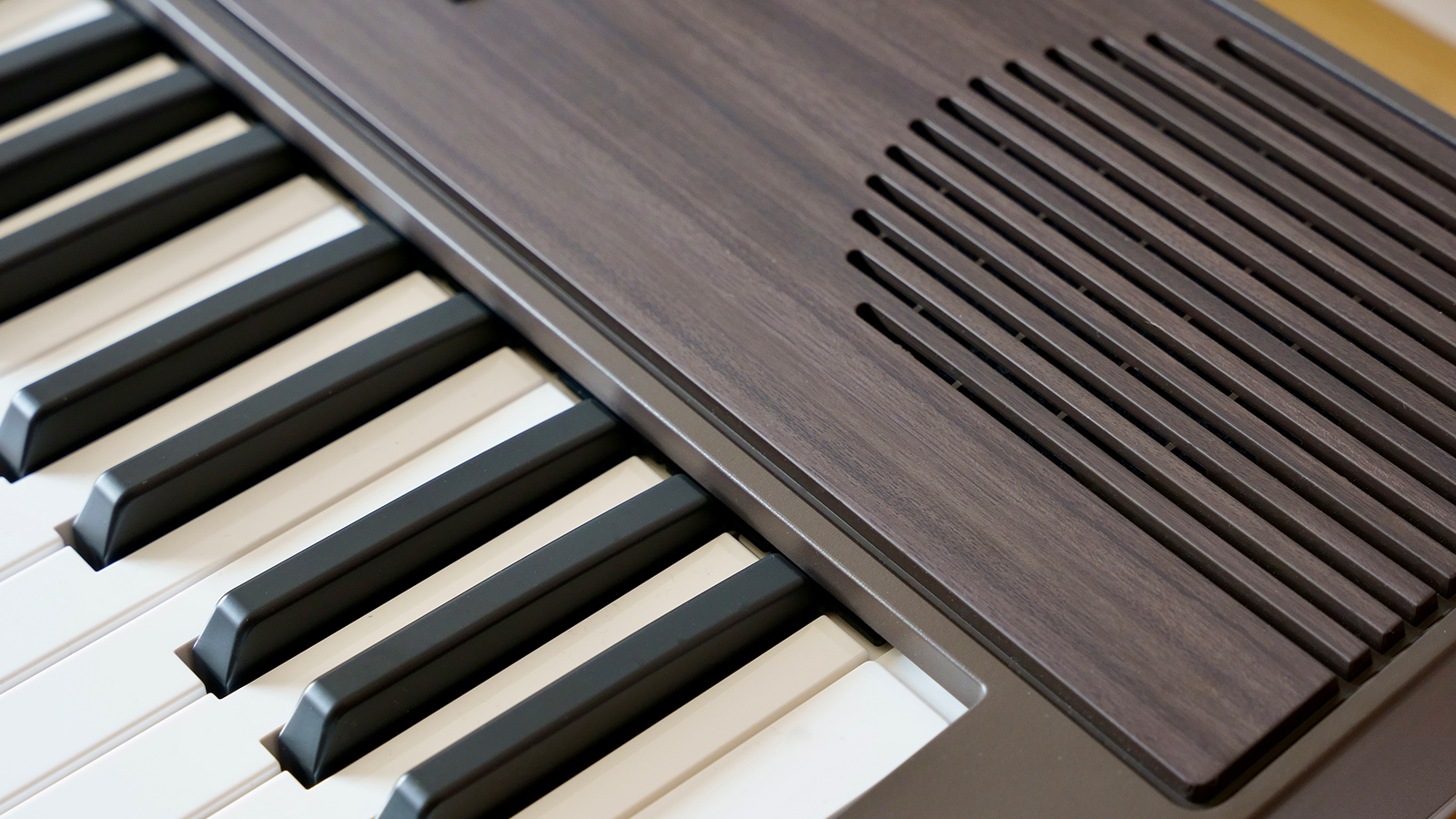
A particularly handy feature on the PSR-E360 is the ‘Portable Grand’ button, which instantly returns the instrument to the main piano sound; a simple but valuable touch when navigating the many voices and effects. Similarly, the ‘Ultra Wide Stereo’ effect is best experienced through headphones, adding a noticeable sense of depth to the sound.
For beginners, the inclusion of 120 songs along with the corresponding charts in Yamaha’s Easy Song Book is a standout feature. It provides a structured path for learning, allowing new players to practice step by step while staying engaged with a variety of genres and styles. The charts make it easy to follow along, reinforcing note reading and timing, and the pre-set songs give instant feedback, helping learners feel a sense of accomplishment. Combined with the keyboard’s built-in voices and accompaniment styles, this feature turns practice sessions into an interactive and enjoyable experience rather than a repetitive chore.
The PSR-E360 retails for around £200, while the newer PSR-E383, with its enhanced features, is available for approximately £170. The E360’s main appeal lies in its sleek, versatile design. Whether it’s worth the extra £30 is ultimately a personal choice.
Playability & sound
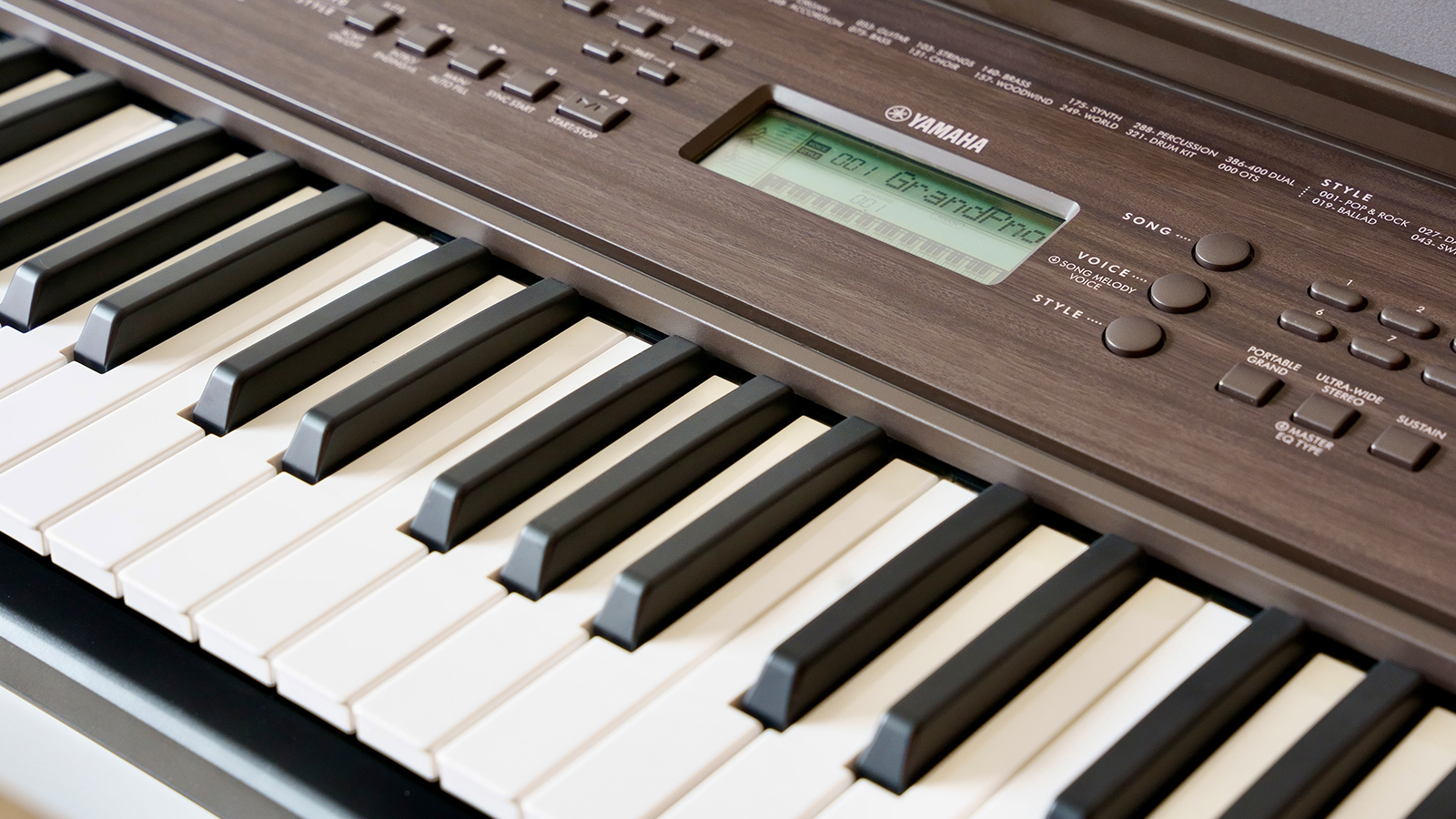
This understated impression extends to the keyboard itself. Despite being aimed at beginners, the keys offer a surprisingly nice bounce and tactile response, making the instrument accessible and enjoyable for new players.
In terms of sound, the built-in speakers can sound thin and boxy – typical for entry-level portable keyboards. You’ll get a much more enjoyable experience with headphones.
With 354 voices, the PSR-E360 provides a wide range of options for beginners. The main piano tone is quite good, but many of the other voices feel somewhat dated. That said, the keyboard still includes inspiring synths, interesting world instruments, and dual patches that blend sounds creatively. One highlight is the soft, mellow string voice, which stands out. The accompaniment tracks, although seemingly unchanged for decades, remain a fun and useful feature for practising.
Verdict
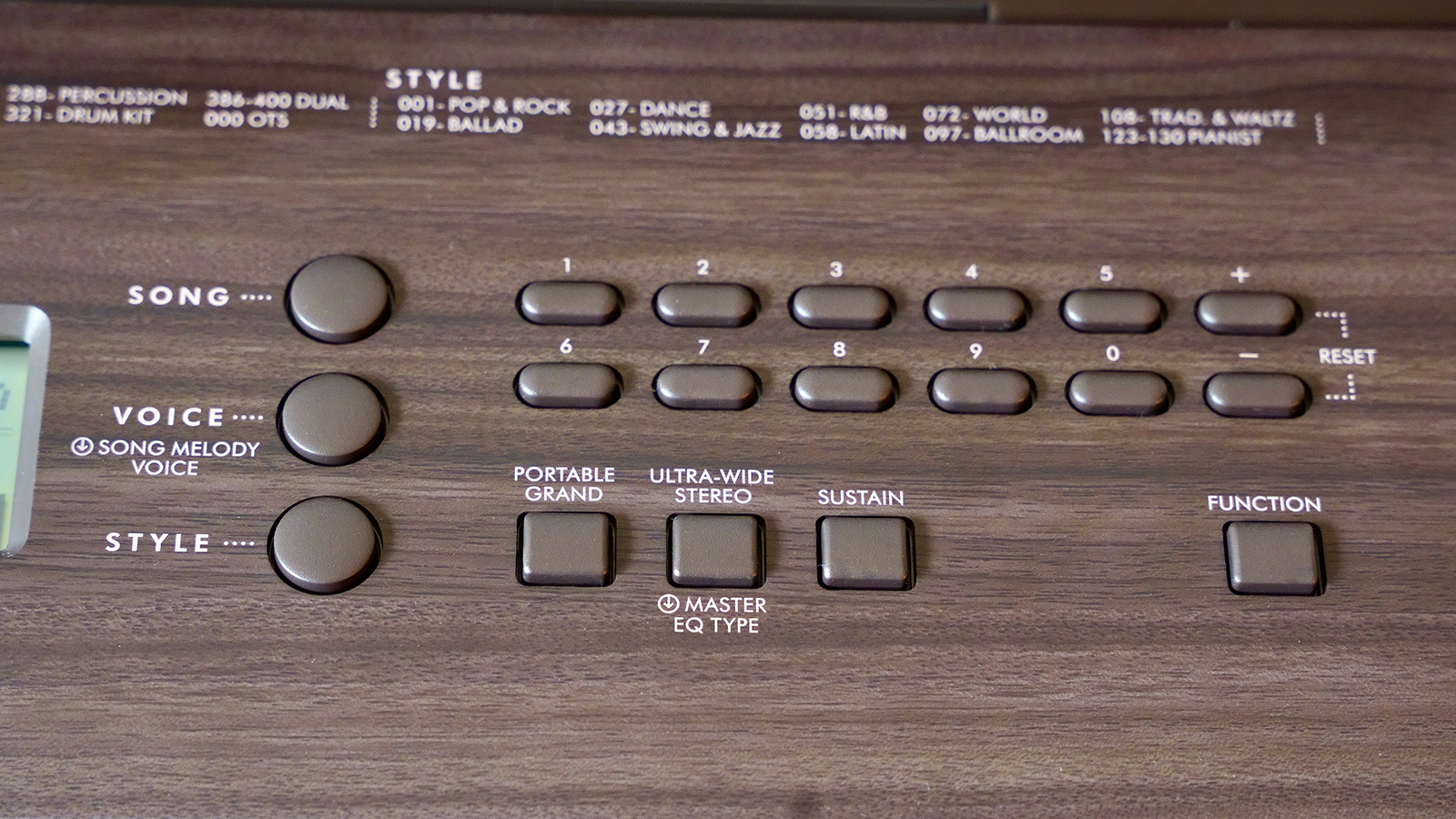
While the Yamaha PSR-E360 may not include all the digital and connectivity features found in 2025 keyboards, it remains a solid choice as one of the best keyboards for beginners. Its clean, simple design allows it to blend seamlessly into any home, and it is light and easy to store. If simplicity is your priority, the E360 is a good option.
That said, it is not the newest model in the PSR-E series; Yamaha has since released the PSR-E383 and PSR-E473, both of which offer a variety of enhanced features. The PSR-E383, in particular, provides a more affordable option with improvements over the E360.
In short, you’re always in safe hands with Yamaha. Keyboards in the PSR series don’t drastically change from model to model, but if you’re looking for the latest technology in arranger keyboards at a better price, then the PSR-E383 and PSR-E473 are worth considering.
Hands-on demo
Specifications
- Dimensions: Width: 940 mm (37”) X Height: 100 mm (3-15/16”) X Depth: 316 mm (12-1/2”)
- Weight: 4.0 kg (8 lb, 13 oz) (excluding batteries)
- Number of Keys: 61
- Display Type: LCD display
- Tone Generating Technology: AWM Stereo Sampling
- Maximum Polyphony: 32
- Number of Voices: 384 Voices + 16 drum/SFX kits
- Sustain Button: Yes
- Number of Preset Backing Styles: 130
- Duo Mode: Yes
- DC Power Input: 12 V
- Headphone Connection: Standard stereo phone jack (PHONES/OUTPUT)
- Sustain Pedal Connector: Yes
- AUX IN Connection: Stereo mini jack
- Amplifiers: 2.5 W + 2.5 W
- Speakers: 12 cm × 2
- Power Consumption: 6 W (using included Yamaha PA-130 AC adapter)
- Contact: Yamaha
Quentin is a composer specialising in writing for contemporary dance, theatre and film. He is also a classically trained pianist and multi-instrumentalist. One half of trip-hop duo Moon Thrills, Quentin also teaches songwriting to the undergraduate students at LCCM in London. He has a newly discovered passion for sound synthesis and finds it a great way to explore new and exciting ways to develop his music.
You must confirm your public display name before commenting
Please logout and then login again, you will then be prompted to enter your display name.
